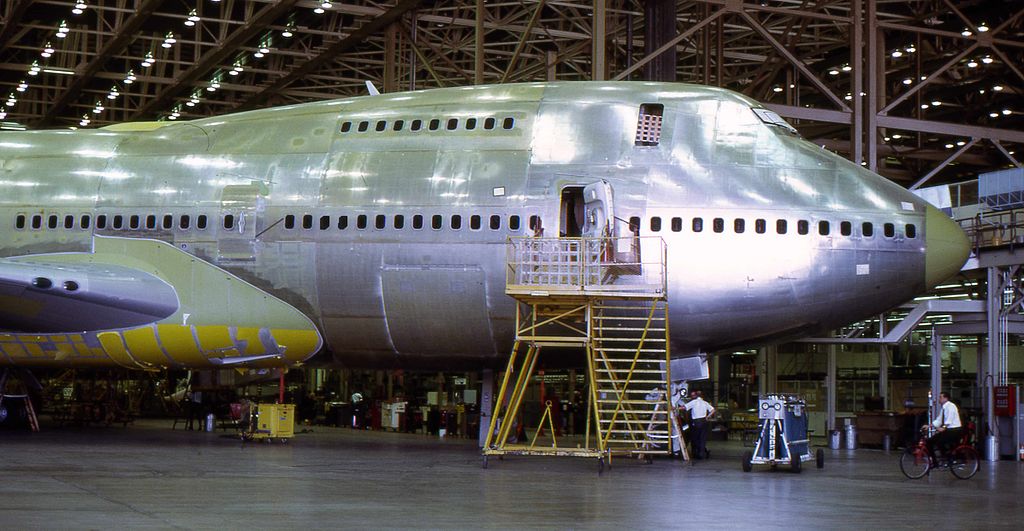Aerospace
Boeing’s iconic 747 will leave the factory for the last time.

The final three 747 aeroplanes will leave Boeing’s facility in Everett, Washington, by the end of 2022.
By the end of the year, Atlas Air should have received the final 747 and three 747-8Fs that are similar to it. (Two ex-Transaero 747-8s are presently being transformed for the Pentagon into military variants to operate as Air Force One.)
The first 747 was rolled out of the Everett Plant, the largest structure by volume in the world, on September 30, 1968. The 747 was certified in December of the same year after its inaugural flight on February 9 of that year. On January 22, 1970, Pan Am began using it. The 747 was the first wide-body, or “Jumbo Jet,” aircraft.
Airbus produced the A380, a version of its jumbo aircraft, after the Boeing 747, but due to a lack of demand, that aircraft was withdrawn from manufacturing. Airlines constantly assess their capacity needs; if they are too high, it will be difficult for them to continue operating.
The big news serves as a reminder that a new era is about to expire. Few aircraft have altered the industry as much as this one.
The first widebody aircraft opened the door to international travel for innumerable individuals all over the world beginning with its entrance into service as a passenger variant with Pan Am in 1970.
The 747-200, which had the nose door that facilitated the loading of big goods, was the first widebody freighter to be delivered to Lufthansa on March 10, 1972, and this year honours the 50th anniversary of that event.
The Boeing 747 8F model, which is nearly 18 feet longer and can carry 16 percent more revenue payload space, is the replacement for the 747 400F variant. Half of a 747 can be constructed in approximately a month, and a full jumbo jet can be built in about two months. Boeing has built and delivered a total of 1,569 747s during the past 50 years.
A widebody twin-engine Boeing 777-8F that has nearly the same capacity as a 747-400F while using less fuel is currently being developed. But it’s safe to say that the Queen of the Skies is a unique aircraft that will never be matched. Without a doubt, Boeing broke the world record by building enormous aircraft during a time when there were fewer technological resources available.

Aerospace
When Ratan Tata was denied entry to the airfield at the Aero India show, he waited

During our visit to Aero India 2019, we had the unexpected opportunity to see Ratan Tata at the event, which was a thrilling moment for us. However, there was a surprising hiccup when the security staff didn’t allow him to enter due to a lack of a security pass.
Despite this, he remained calm and patiently waited for about 20 minutes until a member of the Tata team brought him the required pass, after which he calmly proceeded inside. It was a humbling sight, showcasing his composed demeanor even in such situations.
Ratan Tata ji is not only a renowned industrialist but also a trained pilot, holding a pilot’s license. In 2007, he became the first Indian civilian to fly the F-16 Falcon during the Aero India show in Bangalore—a proud moment for the nation.
His passion for aviation extended beyond flying, as he played a key role in shaping India’s aerospace industry. Under his leadership, Tata ventured into manufacturing and maintaining aerospace components while upholding its legacy of quality. Notably, Tata’s collaboration with Airbus to develop and manufacture the C295 aircraft is a testament to its growing influence in the sector.
-

 Aviation2 months ago
Aviation2 months agoMicrosoft Flight Simulator Raises $3 Million to Bring Back the An-225 Mriya
-

 Airlines2 months ago
Airlines2 months agoQatar Citizens Can Travel to the United States Without a Visa
-

 Aviation2 months ago
Aviation2 months agoQatar Airways bans these new Electronic Devices on plane
-

 Airlines2 months ago
Airlines2 months agoJapan Airlines Rolls Out Free Domestic Flights to International Passengers
-

 Defence2 months ago
Defence2 months agoWhich Country Has the Largest Fleet of Fighter Aircraft?
-

 Airport2 months ago
Airport2 months agoWestern Sydney Airport Welcomes Its First Plane After 6 Years of construction
-

 Airlines4 days ago
Airlines4 days agoDAMAC Air: Dubai’s New Luxury Airline Offers Free Flights for Registration
-

 Aviation2 months ago
Aviation2 months agoDid you know ? Once Boeing 747 carried 1088 passenger in 1991








